ChatGPT picks OpenAI's CEO successor
What ideas can AI come up with for Sam Altman's successor?
A step-by-step guide to create a talent map for any role in 30 minutes
Hiring managers are often underwhelmed with the pace and quality of executive talent acquisition.
Why?
Many hours of sifting through non-relevant candidates limits the amount of productive time spent finding and engaging with those individuals that will really move the dial in your organisation.
Once a hire becomes necessary, recruitment teams are under pressure from hiring managers, and it can take time to identify and analyse the relevant talent pool using traditional talent acquisition tools and methods. Often there are risks associated with not filling senior roles quickly, meaning that organizations rush to hire and only cover a fraction of the relevant research ground.
Candidates are missed and recruiters are forced to hunt in more obvious industries, companies and competitors, reducing the diversity of candidates identified.
It is often those individuals who bring different experiences, skills and backgrounds who deliver transformative changes and innovation to the teams and organizations they join. This is why talent mapping is becoming more popular.
Talent mapping is the process of building talent pools in advance of the recruitment process: being pro-active rather than re-active.
At the point the hire is needed, there is already a pool of people that can be quickly flowed into the evaluation process. This is particularly beneficial where multiple stakeholders need to align on the type of candidate profile preferred and so this head start can save weeks or months off a recruitment process. And ensure the hiring manager and recruitment team are aligned from the start.
Executive talent acquisition and recruitment should be a thoughtful and structured process where the technical skills, experiences and capabilities required are systematically identified and evaluated. Talent mapping in advance of a recruitment process is the best way to ensure this is achieved. In some industries and levels, for example a Partner level hire within Professional Services, it can take over a year to identify, approach, build a relationship, evaluate and hire the right person.
Getting ahead of the game to reduce this lengthy process gives organisations an advantage in hiring the best people.
Whether you call it talent mapping, market mapping, talent pool creation or talent pipelining, the concept behind the approach is to ensure:
So how do leading talent acquisition teams deliver best in class mapping?
1. Identify talent priorities
Starting with the bigger picture, what are the strategic objectives of the organisation over the next 6 - 12 months? Which functions, business units or geographies are set to be the growth engines of the organization? And therefore what are the key roles that will be required? Are any of these roles new or unfamiliar to the organization?
As an example, imagine a scenario where a large multinational business is developing its sustainability strategy. Currently, the organisation has individuals with a focus on sustainability within each of its business divisions. But now, the business wants to formalize the sustainability function under the leadership of a Chief Sustainability Officer. The Chief Executive wants to understand what that role looks like in other organisations. What industries and functions do Chief Sustainability Officers typically have experience of? How big are those teams and what capabilities do they have within them? Who might be relevant for our organisation to consider to approach for a Chief Sustainability Officer role? We're going to use this example with MapX to build out this project. You can use a similar approach with LinkedIn Recruiter or another recruitment database and a spreadsheet.
What are the geographies, industries and job titles you should cover as you consider building your sustainability leadership and function? What are the key criteria for the person/people you need in terms of experiences and exposure? Will this be a skills based mapping (looking across multiple industries for a combination of skills) or a company based search (building a talent map based on the organisational environments/industry experience required for the role)?
If you are hiring in areas that are new or unfamiliar then you might also consider using competitor intelligence. This means deciding on benchmark organisations and mapping their team to understand the structures their skill sets from companies who have built these functions before. This can help you pick up nuances like role title variation or where in an organisation this capability sits and who it reports to.
Through answering these questions, you will create a broad search strategy to map all the relevant people that should be considered.
Continuing with our Chief Sustainability Officer example, we'll use a company based mapping approach. Our customer is a large multinational so we're going to use Boston Consulting Group's 'Most Innovative Companies in the World 2023' and consider those companies' sustainability leadership and team structures. MapX Pro customers can follow along with this project by using the 'BCG Most Innovative 2023' Market map that is already loaded up in the product.
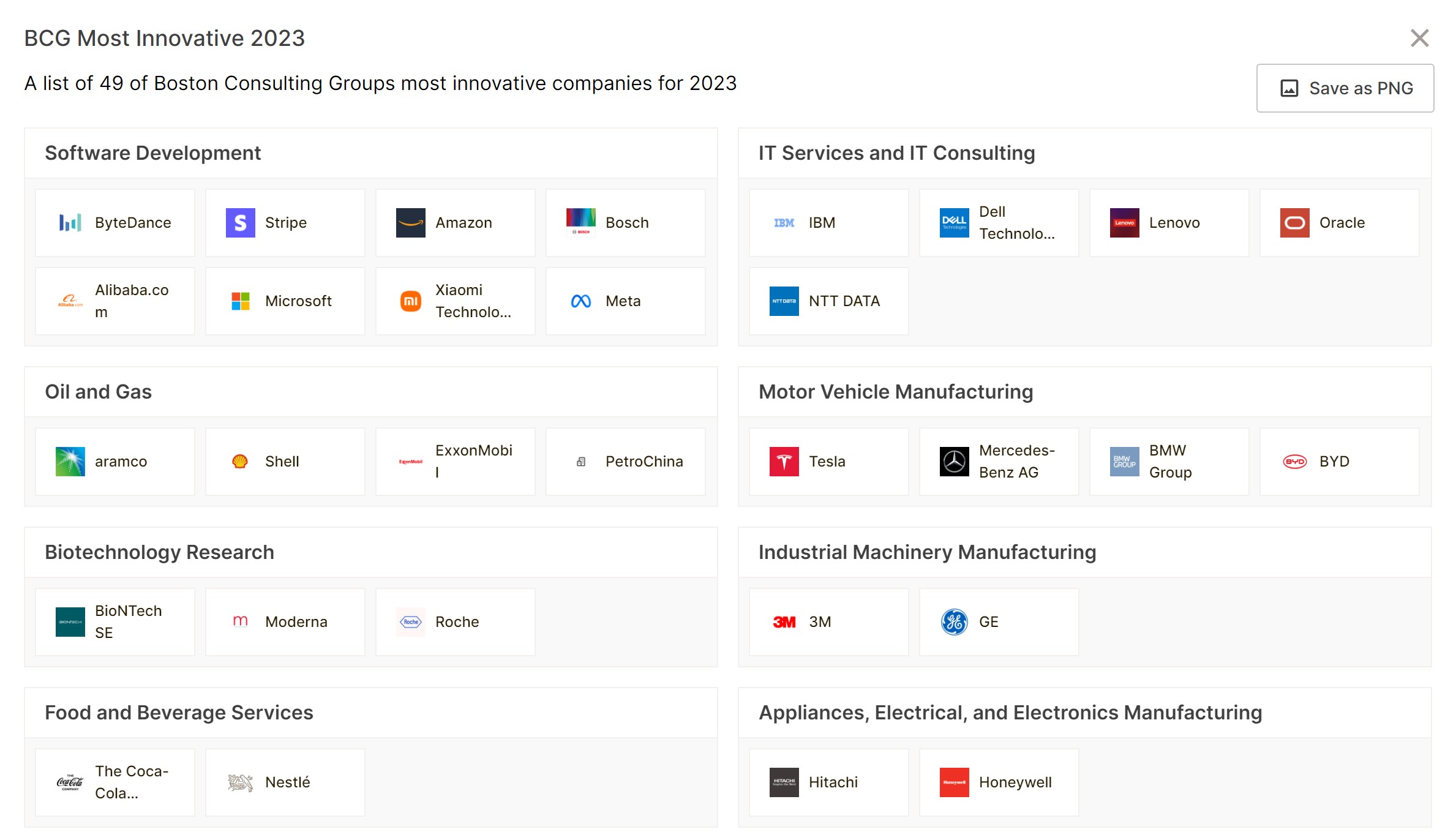
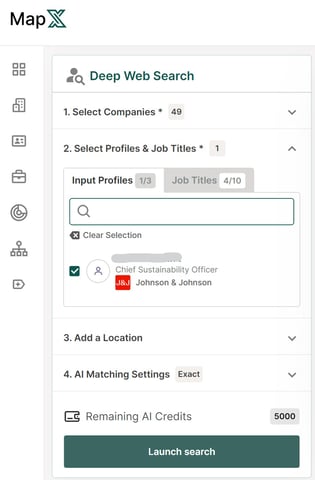
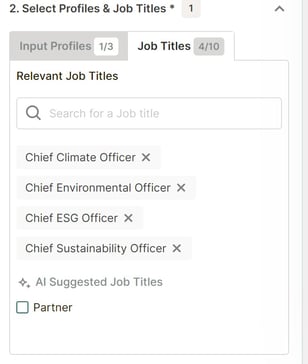
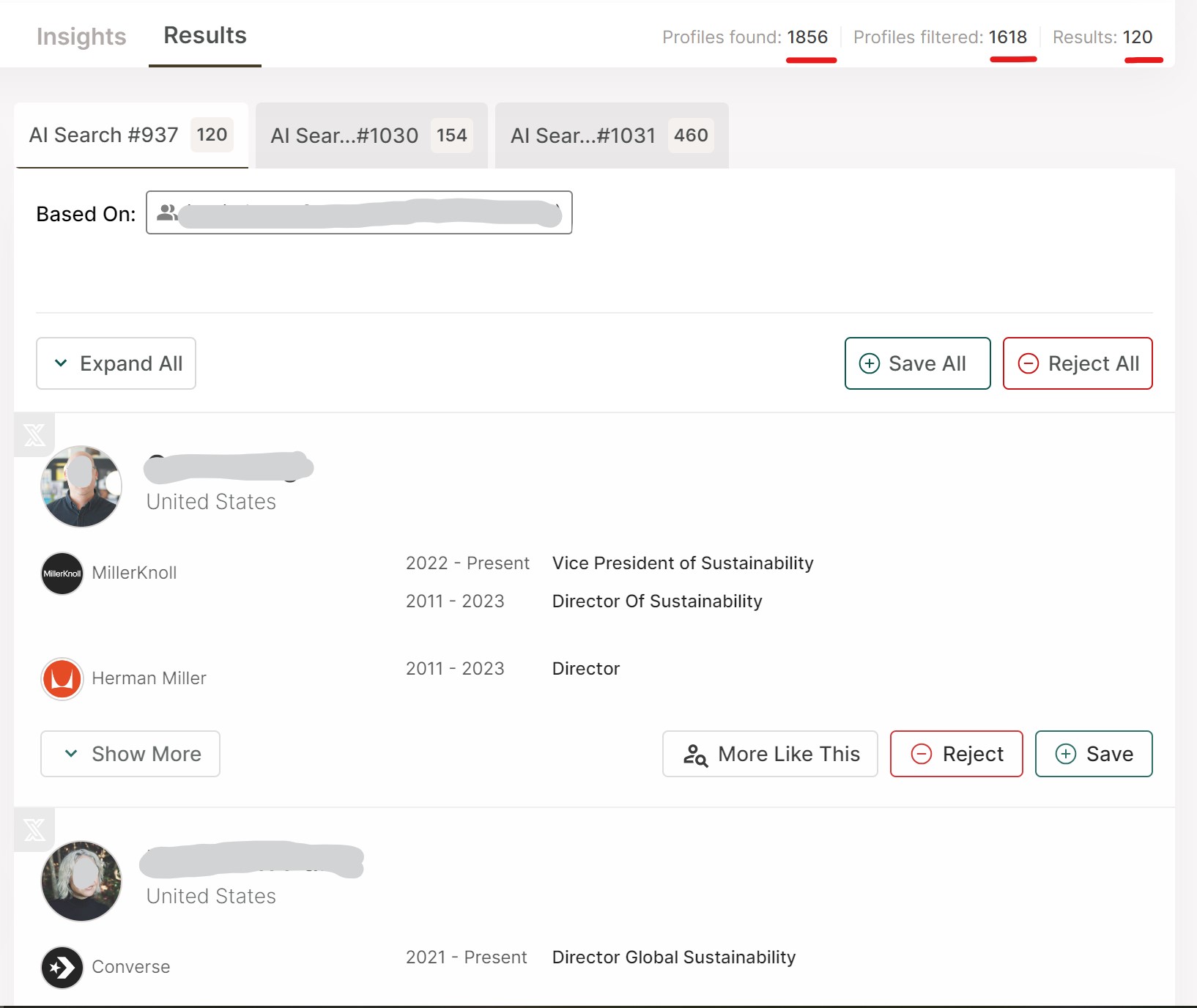
If you are using LinkedIn Recruiter or a similar platform for candidate ID, you'll now need to use a spreadsheet to generate your analysis. In your spreadsheet you will create headings for each data point you want to capture against each person. And then when reviewing profiles, you will categorize each person under those headings. Ideas for headings include:
Sticking with our Chief Sustainability Officer example, who did we find and what did we learn?
We found over 75 people holding the Chief, Global Director, SVP or Group Sustainability role across these 49 businesses. And we can see the companies and industries where this role is most prevalent.
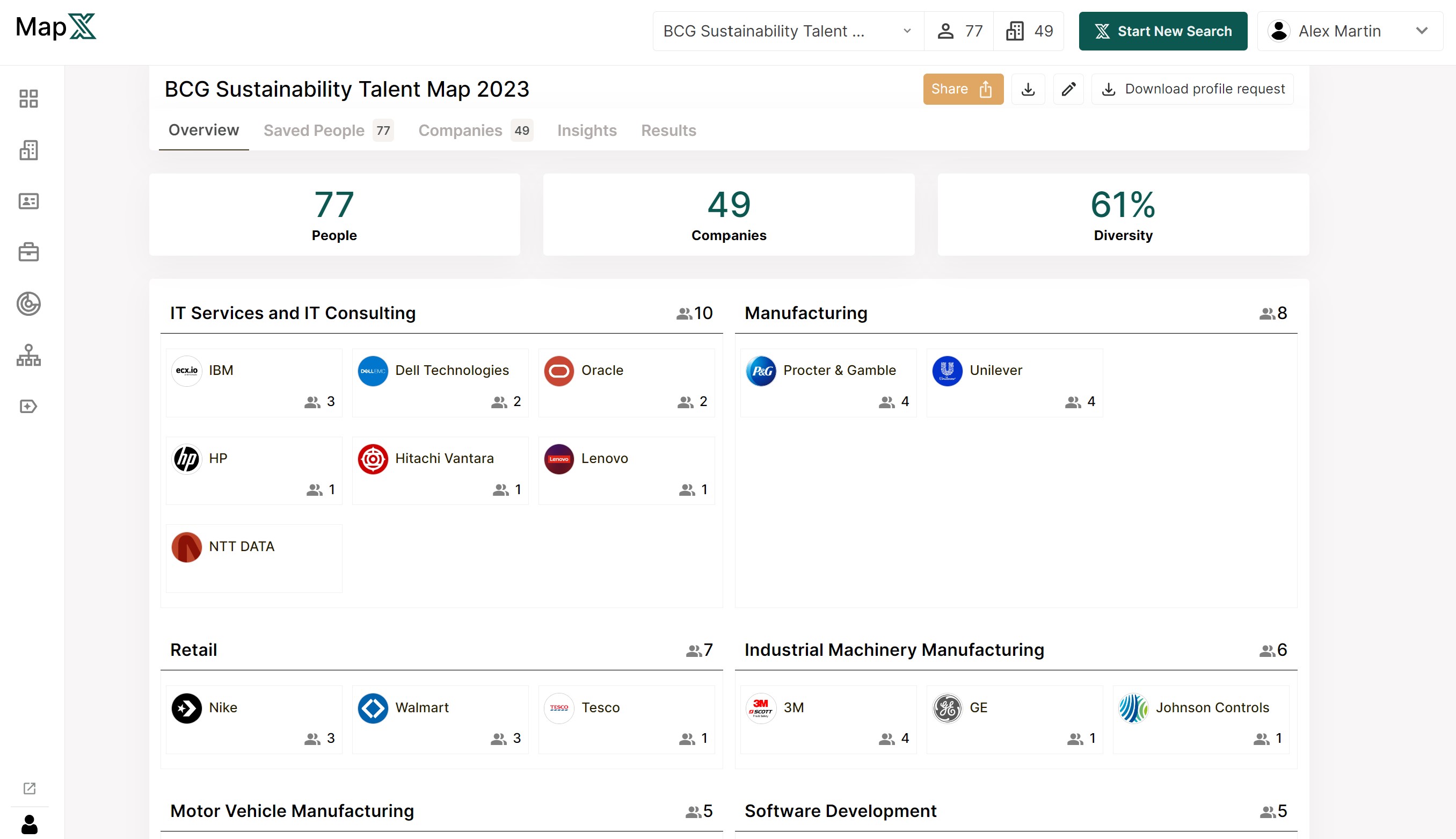
We can see that estimated gender diversity is high among this talent pool, however estimated ethnic diversity isn't as strong. So depending on the overall diversity of your organisation and your goals, you may consider broadening the search.
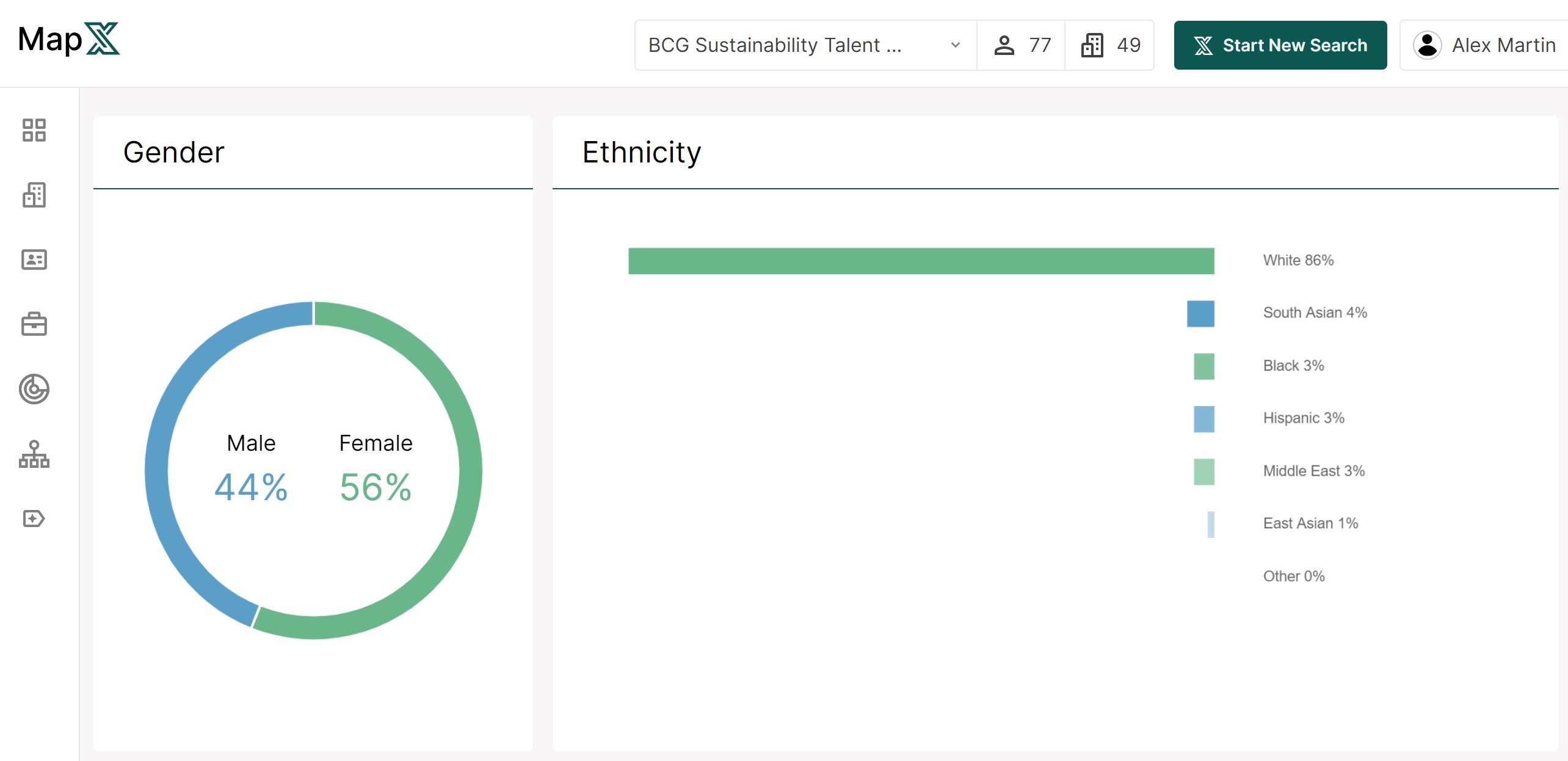
We can see that the US has the largest concentration of talent which is to be expected given the number of US companies on the market map.
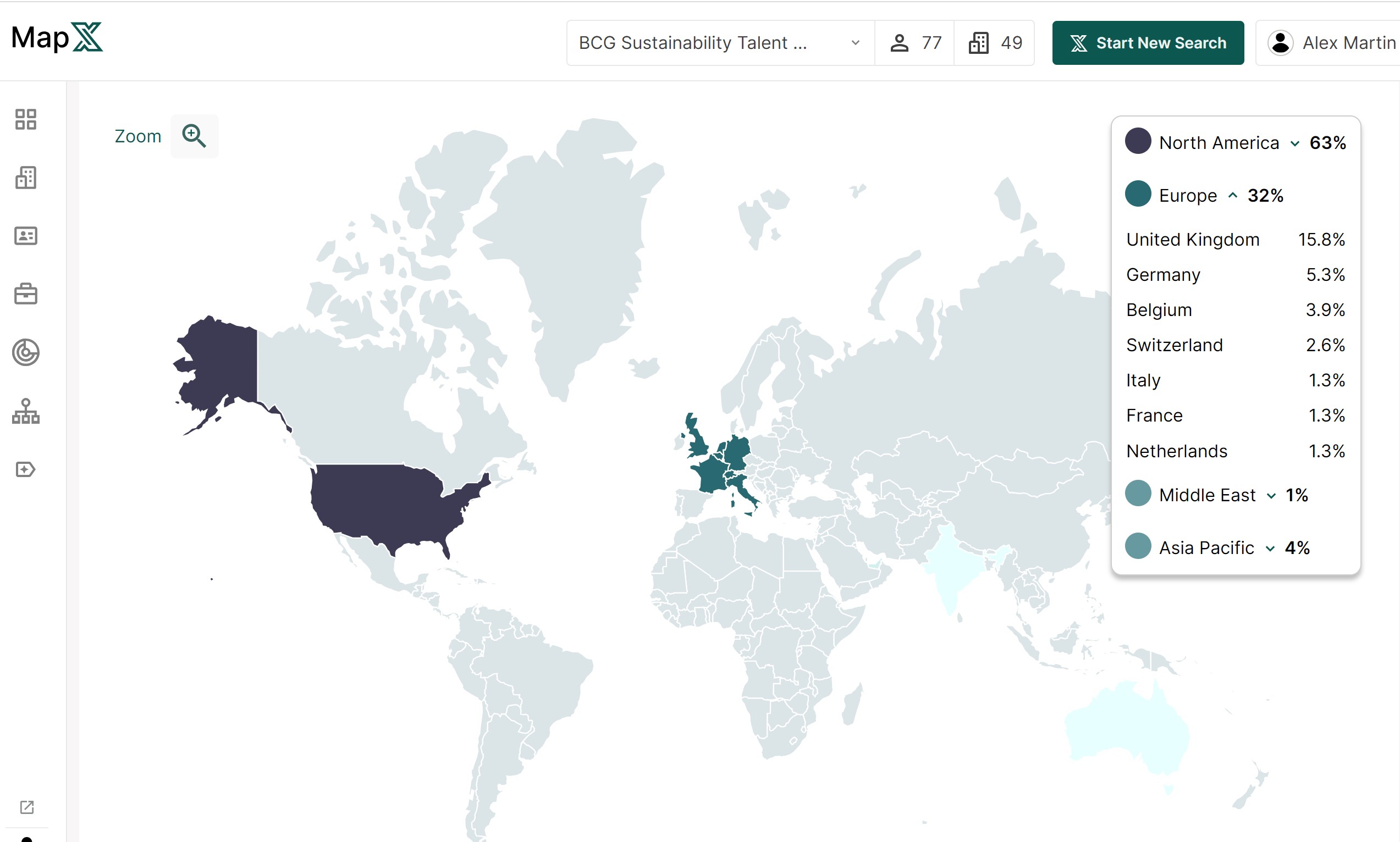
On the right hand chart below, under 'Industry Background', we can see that the most common industry exposure in the career paths of these individuals is via professional services. Indicating that a fifth of this talent pool will have worked in consulting at some point in their career. And providing an indication of where we might look for other relevant talent.
On the chart on the left below, under 'Functional Background', we can see that the most common pathways to the Chief Sustainability Officer role are either via a Marketing pathway or an Operations pathway (Cross Function is a term in MapX which includes Sustainability & Environment which is why it features so highly).
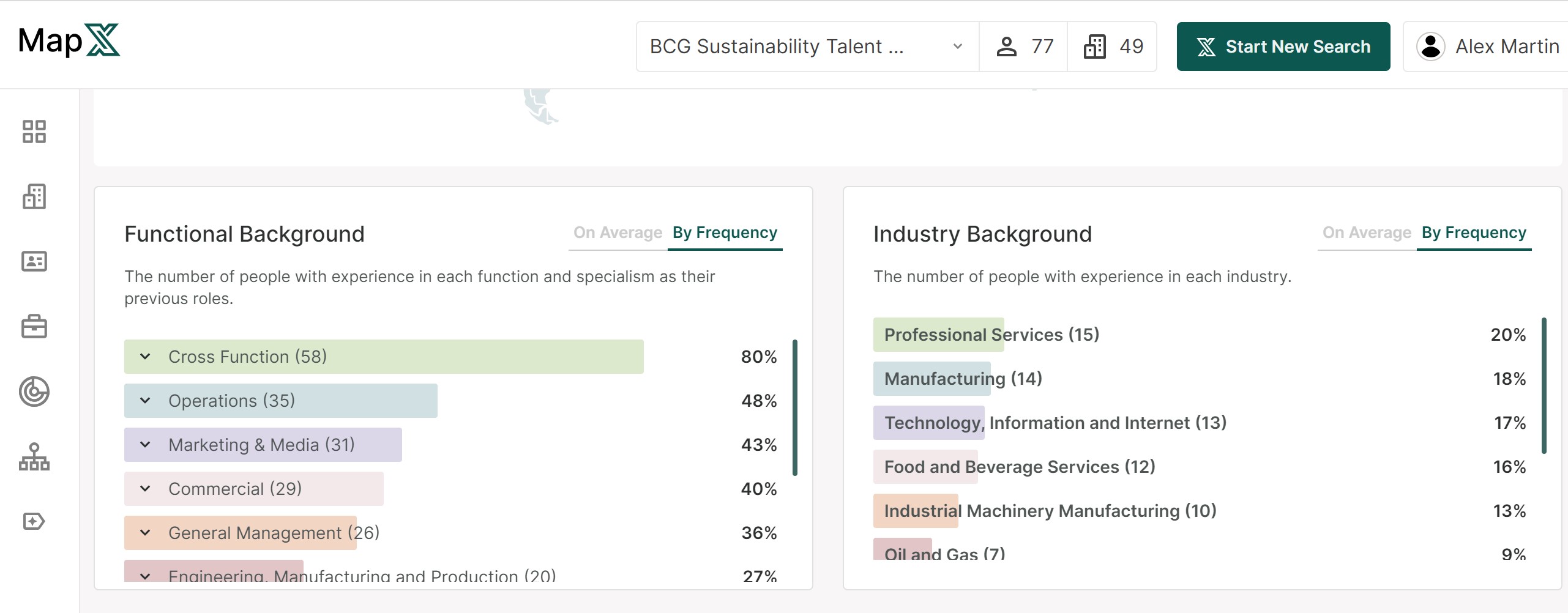
From this information we can see that the population falls broadly into two main cohorts. The individuals who come from more of a Marketing/Commercial route and those from an Operations/General Management and Engineering/Manufacturing route.
The right type of Chief Sustainability Officer will depend on whether the role is more of an influencing and communications role to broadcast the company's sustainability progress, or a more operational role with a brief to deliver sustainable initiatives.
Using MapX you can use present this information and share examples of potential candidates from both these populations which will make it easier to align your stakeholders around the path forward. The end result is that you and your hiring managers feel more informed on the market, the candidate options available and have a high quality list of candidates ready to approach.
There are a huge number of talent acquisition tools on the market today, many of which can be used to support the talent mapping process. We have analysed some of them here. Common approaches are to use LinkedIn Recruiter with Excel or Google sheets to help with data analysis.
If you want to frequently map the market for talent and build talent/skills pools, try MapX, which has been specifically designed to meet these needs.
Talent mapping is proactive, data-driven process that leads to better, faster senior hiring. It helps organisations become and stay more competitive through providing a detailed and accurate picture of the talent you have, the capabilities you need, and the candidates who could enhance your organisation. Through talent mapping you will:
Want to build and analyse talent pools for any leadership role in a fraction of the time? Give MapX a try today.
What ideas can AI come up with for Sam Altman's successor?
Here are some of the best talent acquisition tools and what you need to know about them.
A side-by-side comparison of the best talent acquisition software
Be the first to know about new B2B SaaS Marketing insights to build or refine your marketing function with the tools and knowledge of today’s industry.